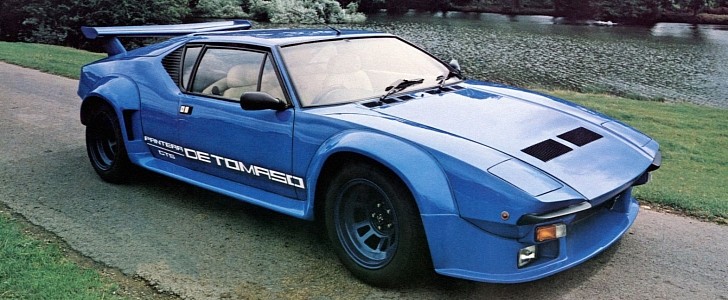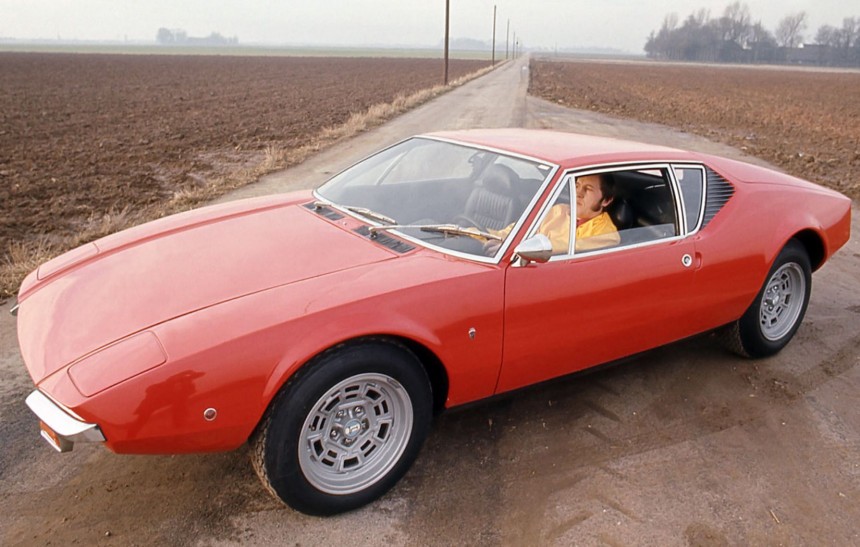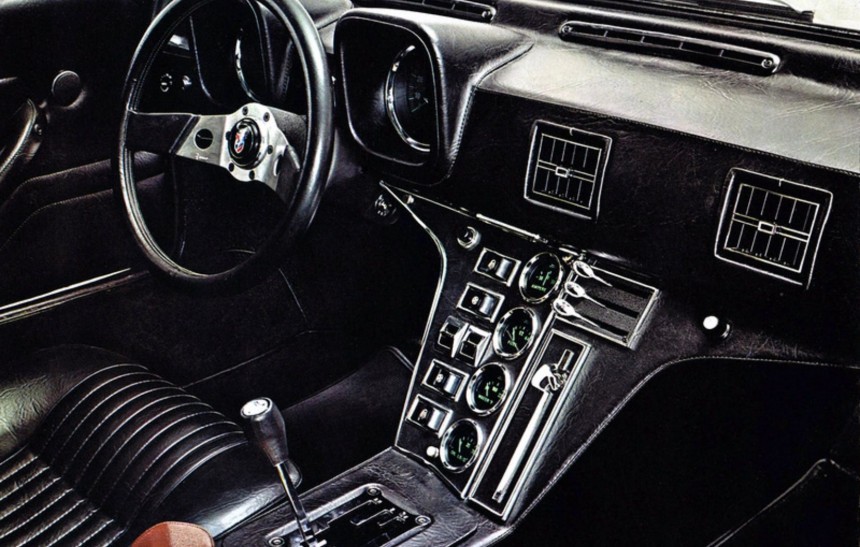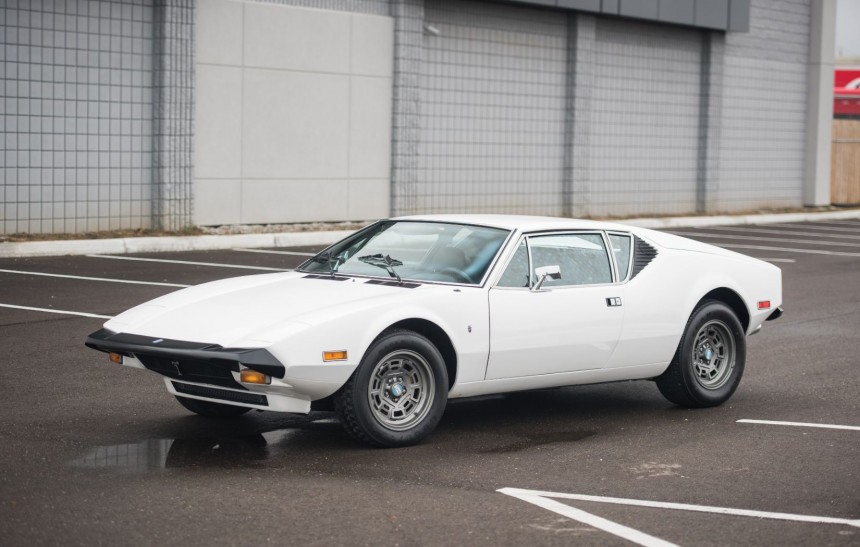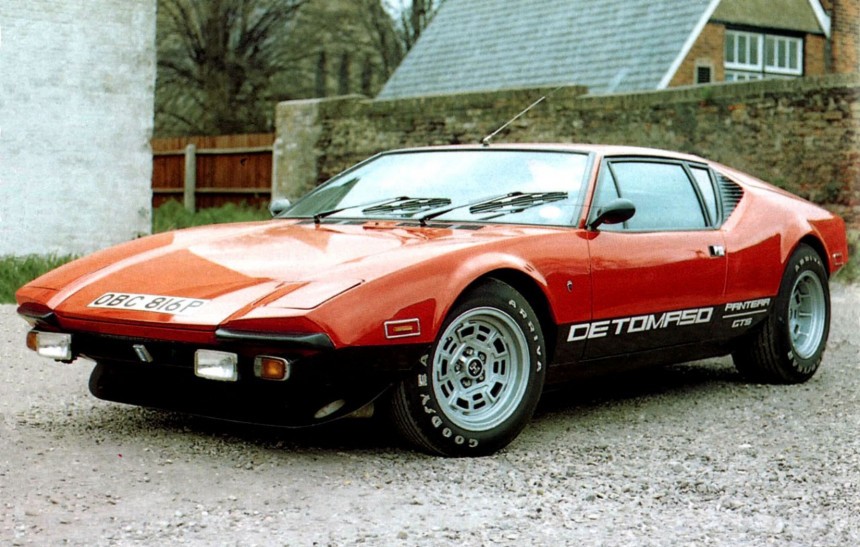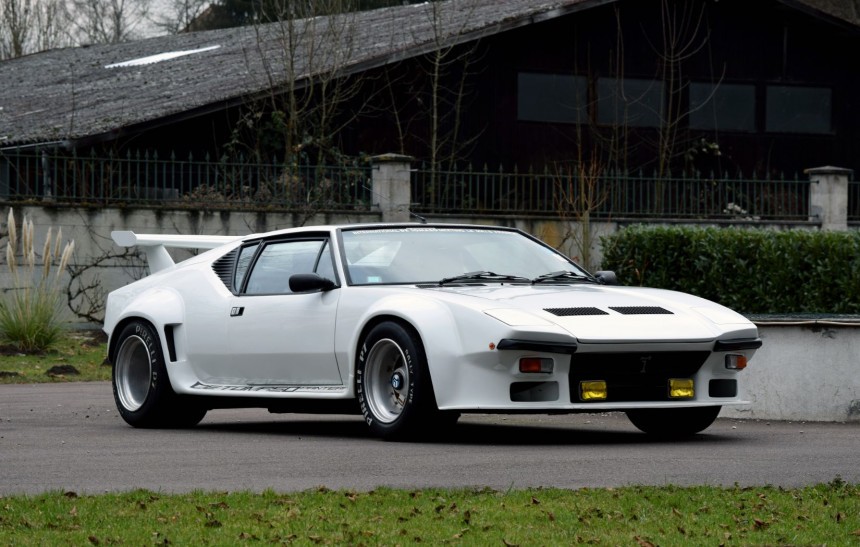How would you feel if Ford would announce that it would supply performance engines for an Italian sports car manufacturer? It’s less than likely today, but more than 50 years ago, it happened and the DeTomaso Pantera is the most epic result of that collaboration.
When you think of an Argentine who decided to quit his day job and start building his own sportscars o Italian soil, the first name that springs to mind these days is Horacio Pagani. However, a few decades before him, a 27-year-old former racing driver named Alejandro de Tomaso was the first to accomplish this feat when he started the company that ultimately produced one of the most iconic sports cars of the era.
In the late 1950s, he decided to make the world a better place by starting to build cars. The new company that took his name was based in Modena, Italy, and was focused on race machines in the early days, developing several interesting prototypes. As the years went on, with the help of his American brother-in-law Amory Haskell Jr, they would expand to road-legal sportscars with the little Vallelunga and the Giorgetto Giugiaro-designed Mangusta, all while forming a strong partnership with Ford in the process.
After failing to buy Ferrari a few years earlier, the Blue Oval was preparing to take over an 80% stake of De Tomaso, Ghia, and Vignale from its original owners and future president Lee Iacocca wanted to make a P.R. stunt out of this occasion by bringing a gorgeous Italian-built sports car with a powerful Ford engine to the U.S. market.
Back in Italy, De Tomaso didn’t want to simply upgrade the Mangusta, and thanks to the resources received from abroad, they started to work on a completely new car. The established coachbuilders at Carrozzeria Ghia were enlisted to design it and Detroit-born Tom Tjaarda was the person in charge of the project.
Along with his team, he drew up the smooth bodywork while Gian Paolo Dallara designed a state-of-the-art steel monocoque chassis that would eliminate all of the Mangusta’s shortcomings. For the powerplant, they had the potent M-Code 351 cu in (5.8-liter) Cleveland V8 to work with which was tuned to produce 330 hp and was bolted to a five-speed ZF transaxle.
Development started in 1969 and only 9 months later, the completely new car took to the stage at the 1970 New York Motor Show, a few weeks before its European debut.
The spectacular Pantera oozed luxury and Italian design, offering standard features such as power windows or air conditioning. It wasn’t perfect since those over 6 feet (1,83 m) struggled with the lack of headroom but both Ford and DeTomaso promised it would deliver enough performance and a thrilling driving experience that would more than make up for any apparent flaws.
Best of all, it would be sold in the U.S. through select Lincoln-Mercury dealerships for more than half the price of a Ferrari.
In late 1971, the first batch of 75 units crossed the Atlantic. These examples are known for their particularly imperfect Carrozzeria Vignale bodies, but thanks to Ford precision stampings, another 932 cars were shipped from Modena with better bodywork.
One could own this new and intriguing car for a starting price of $10,000, ($66,467 in today’s money), which wasn’t particularly cheap at the time. However, they sold well and for the 1972 model year, numerous modifications were made to make the model even better.
To comply with stricter emissions guidelines and allow the car to run on standard, lower-octane gas which was easier to get at the time, the Q-code 351 engine was fitted. Its compression ratio was lowered, but it gained a more aggressive camshaft taken from the 428 Cobra Jet, along with a dual point distributor and new exhaust manifold. Performance dropped to 296 hp but it was still good for a 0 to 60 mph (97 kph) time of 5.5 seconds.
In August 1972, the "Lusso" (luxury) Pantera L was also introduced in the U.S. with a batch of welcomed cosmetic and mechanical upgrades that made it exponentially better and more elegant. It was such a good car that a year later Road Test Magazine declared it Import Car of the Year, ahead of much more popular models from the likes of Ferrari, Lamborghini, or Porsche.
Back home on the Old Continent, the car was doing even better, morphing into the sportier GTS which was already roaming the streets. Developed for Group 3 racing, it made 345-hp thanks to engine upgrades such as larger Holley carbs, forged pistons, an aluminum intake manifold, and bespoke free-flowing exhaust headers. The model also came with wider wheels, ventilated disc brakes, adjustable suspension, and a more aggressive steering setup.
A GTS version was eventually imported to the U.S. in 1974 but it didn’t come with the engine modifications, larger wheels, or any of the performance upgrades of its European counterpart. This prompted some Pantera enthusiasts that wanted much more to ditch the low-compression Cleveland for a Boss 429 that in some cases even received a turbocharger.
Unfortunately, that year Ford decided to pull the plug on De Tomaso, selling its stake back to the company’s founder and officially ceased all imports by 1975.
Now on their own, the Italians continued to build the car and improve it, using Ford V8s sourced from Australia where the Cleveland remained in production until 1984. The engines were shipped to Europe where they were tuned to make up to 355 hp.
In 1980, the chassis was thoroughly refreshed and the awesome GT5 variant was introduced. It came with a wide fiberglass body kit and a rear wing that looked much like what we would see years later on the 25th Anniversary Lamborghini Countach. It had bigger brakes, a far more luxurious interior and was produced until 1985 when it was replaced by the GT5-S, another rabid, wide-bodied Pantera.
The most outrageous version of them all was the limited-series 90 Si. A thoroughly redesigned track-oriented beast with the same Brembo braking system as the Ferrari F40.
it was powered by a heavily modified 5.0-liter 302 derived from the old Mangusta unit that received a modern ECU, direct port fuel injection, redesigned cylinder heads, intake manifolds, camshafts, valves, and pistons.
Only 41 of these fantastic machines were built between 1990 and 1993 when the DeTomaso Pantera finally rode into the sunset.
Some might argue that it wasn’t a true Italian sports car because of what they see as cheap American engines but there are many far more people out there who see it as one of those rare cars with a unique personality that you couldn’t help but love. It delivered smooth, linear torque through a heck of a V8 mounted in the right place, all while looking and handling as an Italian sports car should. Because It epitomized the best of both worlds it earned its place among the most iconic sports cars of all time.
In the late 1950s, he decided to make the world a better place by starting to build cars. The new company that took his name was based in Modena, Italy, and was focused on race machines in the early days, developing several interesting prototypes. As the years went on, with the help of his American brother-in-law Amory Haskell Jr, they would expand to road-legal sportscars with the little Vallelunga and the Giorgetto Giugiaro-designed Mangusta, all while forming a strong partnership with Ford in the process.
After failing to buy Ferrari a few years earlier, the Blue Oval was preparing to take over an 80% stake of De Tomaso, Ghia, and Vignale from its original owners and future president Lee Iacocca wanted to make a P.R. stunt out of this occasion by bringing a gorgeous Italian-built sports car with a powerful Ford engine to the U.S. market.
Along with his team, he drew up the smooth bodywork while Gian Paolo Dallara designed a state-of-the-art steel monocoque chassis that would eliminate all of the Mangusta’s shortcomings. For the powerplant, they had the potent M-Code 351 cu in (5.8-liter) Cleveland V8 to work with which was tuned to produce 330 hp and was bolted to a five-speed ZF transaxle.
Development started in 1969 and only 9 months later, the completely new car took to the stage at the 1970 New York Motor Show, a few weeks before its European debut.
The spectacular Pantera oozed luxury and Italian design, offering standard features such as power windows or air conditioning. It wasn’t perfect since those over 6 feet (1,83 m) struggled with the lack of headroom but both Ford and DeTomaso promised it would deliver enough performance and a thrilling driving experience that would more than make up for any apparent flaws.
In late 1971, the first batch of 75 units crossed the Atlantic. These examples are known for their particularly imperfect Carrozzeria Vignale bodies, but thanks to Ford precision stampings, another 932 cars were shipped from Modena with better bodywork.
One could own this new and intriguing car for a starting price of $10,000, ($66,467 in today’s money), which wasn’t particularly cheap at the time. However, they sold well and for the 1972 model year, numerous modifications were made to make the model even better.
In August 1972, the "Lusso" (luxury) Pantera L was also introduced in the U.S. with a batch of welcomed cosmetic and mechanical upgrades that made it exponentially better and more elegant. It was such a good car that a year later Road Test Magazine declared it Import Car of the Year, ahead of much more popular models from the likes of Ferrari, Lamborghini, or Porsche.
Back home on the Old Continent, the car was doing even better, morphing into the sportier GTS which was already roaming the streets. Developed for Group 3 racing, it made 345-hp thanks to engine upgrades such as larger Holley carbs, forged pistons, an aluminum intake manifold, and bespoke free-flowing exhaust headers. The model also came with wider wheels, ventilated disc brakes, adjustable suspension, and a more aggressive steering setup.
Unfortunately, that year Ford decided to pull the plug on De Tomaso, selling its stake back to the company’s founder and officially ceased all imports by 1975.
Now on their own, the Italians continued to build the car and improve it, using Ford V8s sourced from Australia where the Cleveland remained in production until 1984. The engines were shipped to Europe where they were tuned to make up to 355 hp.
The most outrageous version of them all was the limited-series 90 Si. A thoroughly redesigned track-oriented beast with the same Brembo braking system as the Ferrari F40.
it was powered by a heavily modified 5.0-liter 302 derived from the old Mangusta unit that received a modern ECU, direct port fuel injection, redesigned cylinder heads, intake manifolds, camshafts, valves, and pistons.
Only 41 of these fantastic machines were built between 1990 and 1993 when the DeTomaso Pantera finally rode into the sunset.
Some might argue that it wasn’t a true Italian sports car because of what they see as cheap American engines but there are many far more people out there who see it as one of those rare cars with a unique personality that you couldn’t help but love. It delivered smooth, linear torque through a heck of a V8 mounted in the right place, all while looking and handling as an Italian sports car should. Because It epitomized the best of both worlds it earned its place among the most iconic sports cars of all time.
